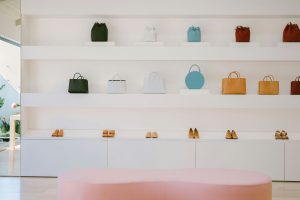Fashion Psychology: Emotional Narratives Through Clothing Choices
The clothes we wear often make a statement about who we are. From choosing the perfect outfit for a job interview to picking the right dress for a date, our clothing choices convey messages to the world. However, have you ever stopped to think about the impact of these clothing choices on our emotions? This is where the concept of fashion psychology comes in.
What is Fashion Psychology?
Fashion psychology is a field that explores the relationship between clothing and human behavior. It delves into the emotional and psychological impact that our clothing choices have on both ourselves and those around us. It takes into account factors such as personal style, societal norms, and individual interpretation of fashion.
As individuals, we use clothing as a way to express ourselves and project a certain image to the world. However, fashion psychology goes beyond surface-level interpretations and delves into the deeper meanings behind our clothing choices.
The Role of Emotional Narratives in Clothing Choices
Our clothing choices are often guided by our emotions. We may choose to wear certain outfits to make us feel confident, professional, or even happy. This is because our clothing holds the power to evoke certain emotions within us and those around us.
For example, someone who is feeling down may choose to wear brighter, more colorful clothing to boost their mood. Similarly, a person interviewing for a job may opt for a power suit to project an air of confidence and competence.
Fashion psychology also takes into account our individual emotional narratives and how they influence our clothing choices. Our past experiences, cultural background, and personal beliefs can all play a role in our interpretation of fashion and the emotions it evokes.
Societal Norms and Clothing
Societal norms also have a significant impact on our clothing choices and the emotional narratives behind them. Fashion trends and cultural expectations can dictate what is considered appropriate or desirable to wear, leading to individuals feeling pressure to conform.
For example, high school students may feel compelled to dress a certain way to fit in with their peers, even if it goes against their personal style. This need to conform to societal norms can have a powerful emotional effect, both positive and negative, on our self-perception and self-confidence.
The Power of Clothing in Shaping Our Emotions
Our clothing choices not only reflect our emotions but also have the power to shape them. This is known as embodied cognition, the idea that our bodily experiences can influence our psychological well-being. Simply put, what we wear can have a direct impact on how we feel.
Studies have shown that wearing specific types of clothing can alter our mood and behavior. For example, dressing up in formal attire can make us feel more powerful and confident, while wearing comfortable and casual clothing can induce a more relaxed and carefree state of mind.
The Impact of Color on Emotions
Color is a powerful tool in fashion psychology as it can have a significant impact on our emotions. Different colors are associated with different feelings and can evoke certain emotions within us. For example, the color red is often associated with passion and energy, while blue is associated with calm and peace.
Advertisers and marketers have long used the psychology of color to influence consumer behavior. From fast-food restaurants using the color red in their branding to stimulate hunger, to healthcare organizations using blue in their marketing to convey trust and reliability, color plays a crucial role in the emotional narratives behind our clothing choices.
Conclusion
In today’s world, where fashion plays a significant role in our daily lives, it’s essential to understand the emotional narratives behind our clothing choices. Fashion psychology allows us to gain a deeper understanding of the impact our clothing has on our emotions and how we can use it to our advantage.
Next time you’re choosing an outfit, take a moment to consider the emotions you want to convey and how your clothing can influence them. Remember, fashion is not just about looking good but also feeling good. And by delving into the world of fashion psychology, we can gain a better understanding of the powerful connection between our clothing and our emotions.










